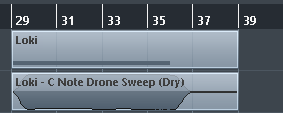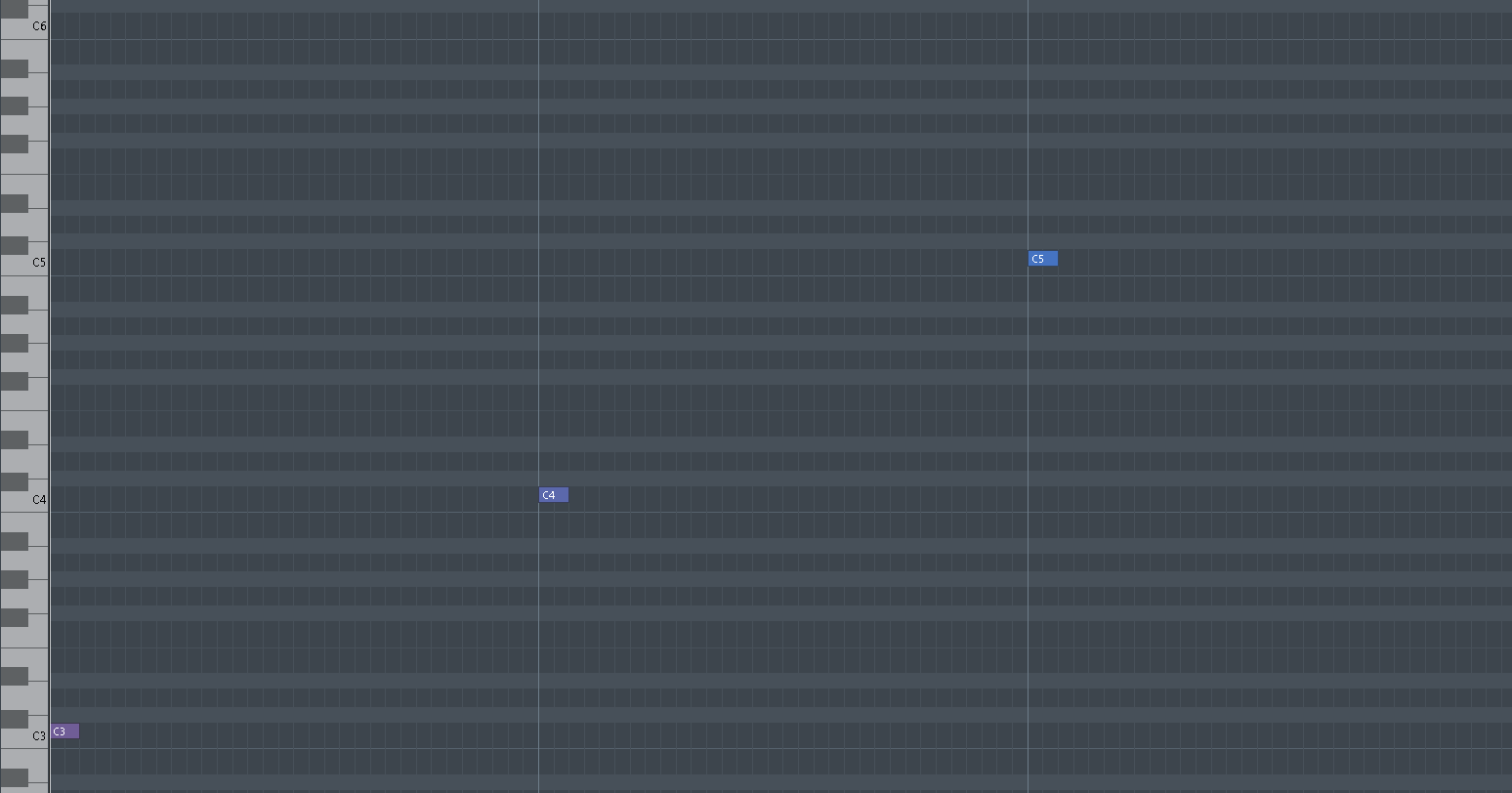Using Loki for Ambient Production - by Isostatic.
Using Loki for Ambient Production – by Isostatic
In this getting started tutorial, ambient artist Isostatic puts together a few basic elements (drone, lead and atmosphere) to give you an idea of what can be done just using Loki as a sound source in your DAW.
“Loki is a deceptively simple synth …
… with a deep, warm bass tone suitable for basslines and drones, a great sounding filter that makes it ideal for acid style lead lines, but it can also be used to build more complex ambient soundscapes.
LEAD
To start things off, I have set the tempo to 70BPM. I’ll be using Cubase to enter MIDI and record audio, but any DAW can be used for this. Loki is set up with a basic saw wave with the resonance at around the 1 o’clock position.
I played in a simple sequence in D Minor and did some manual note arrangement. The initial pattern is 3 bars long.

For this demo, we need something a little longer, so I’m just going to repeat the first sequence to give us 6 bars.
Next, I record the sound to an audio track.
To create some movement in the sound, I slowly bring up the filter cut-off and resonance controls during the recording.

Once the audio is recorded, the MIDI can be muted. Some delay and reverb are also added in Cubase.
D MIN PENTATONIC LEAD (DRY)
D MIN PENTATONIC LEAD (DELAY + REVERB)
BASS DRONE
Next, I record a single C2 bass note with Loki’s square wave.

While recording, I sweep the cut-off filter from a low position up and back down again. The resonance control was fixed in a medium position, giving a nice bite to the overall sound.
With the filter low and just a bit of resonance, Loki is capable of some lovely sub bass harmonics!

C NOTE DRONE SWEEP (DRY)
C NOTE DRONE SWEEP (REVERB)
SIMPLE SINES
Finally, I make a sine-based patch on Loki (see the user guide on how to patch this) and record a simple sequence of 3 C notes.

The release is set quite long, so you can hear Loki play almost until the next note.

C NOTE SINES (DRY)
C NOTE SINES (REVERB)
LOKI – FIRST KONTAKT!
Now that we have some recordings of Loki, what can we do to make something more interesting? Let’s introduce Loki to a sampler – In this case, Native Instruments Kontakt.
First, I’m going to reverse the Loki C Notes Sines sample. Next, I drag the new reversed version into Kontakt. With the reversed sound, the long release times we recorded now give us a slow attack, making the sound fade in over a few seconds.
Within Kontakt, I extend the release, so the sample keeps playing for a couple of seconds after you release a key.
As we sampled our 3 notes in C, we can play any notes and the sampler should pitch things correctly for us. To match the lead sequence we started with, I’ll play something in D Minor.

With the release time increased in Kontakt, we start to get some harmonies as notes clash and samples continue playing after key release.
In the Loki – First Kontakt sample, you can hear the full sequence together with reverb and a soft white noise used to create an ambient atmosphere.
The overall effect is quite spacey, and all started from just 3 notes and a single Loki sound!
** Note – Additional processing was applied to give you a rough idea of how things could sound in a more complete mix. However, it is by no means production ready as it is!
LOKI – FIRST KONTAKT D-MINOR PENTATONIC
LOKI – ALL TOGETHER NOW!
So, we have an ambient atmosphere with lots of reverb. What next? Let’s put everything together and see how it sounds.

I have imported the drone and the lead into Kontakt. The drone, which was created in C, I play in D to match the lead and the sine atmosphere.
At the end, I bring in the lead to conclude our demo piece.
And this concludes our basic introduction to Loki! I hope it gives you an insight into the warmth and character of the Loki sound, and perhaps how you could make use of one within your own productions.
Have fun!”
Isostatic

